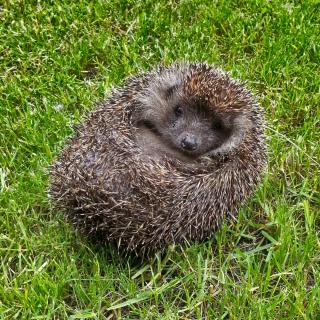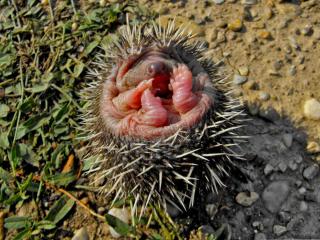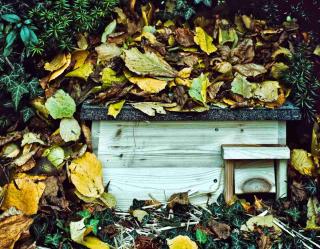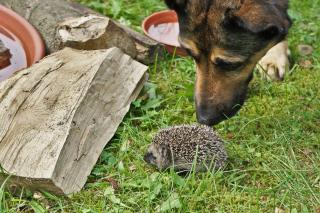

Master of the garden during the daytime, eager to have a friendly, affordable and completely natural night-time assistant? Prepare food and lodging for a hedgehog, and your wish will come true! Let’s get to know this cute and useful animal. Here are a few tips to make sure it feels welcome in your garden… to the point of calling it home!
This small insect-devouring mammal is actually an omnivore: its digestive tract helps it absorb nutrients from both plant and animal food. Here are a few key facts:
The common hedgehog is normally native to Europe. It doesn’t live in the wild in America.

Predators and dangers : Natural predators include the badger, fox, marten, royal eagle, eagle-owl. Man-made risks are swimming-pools, plastic pollution, insecticides, cars and deforestation (causes habitat loss).
Season for hedgehog reproduction : April to September For this typically solitary animal, males and females only meet to mate. The temporal gland releases pheromones that spread far and wide. This smell marks the hedgehog’s territory and helps them avoid each other in day-to-day life. When the mating season approaches, Sir Hedgehog seeks out a Missus.
As soon as he’s spotted one, an amazing mating dance begins that can last several hours. Sir Hedgehog runs circles around his conquest, prodding her with his nose and paws and occasionally urinating along the way. He continues until the lady stretches her hind legs behind her and lowers the bristles on her back. At that moment, Sir Hedgehog can climb on her back to mate without being pricked.
Once he’s finished, the male hedgehog excretes a sort of gooey substance that coats the female’s genitals, making it more difficult for her to mate with another male (but not impossible: hoglets from a same litter often have different fathers). Sexual maturity is reached at the age of one year old, but most sows need three years to successfully breed their first litter of surviving hoglets.

Depending on the country you’re in, the hedgehog might be a protected species. It’s illegal to destroy them, transfer them to new locations, cage them, sell them or even to naturalize them. If your garden is a good place for hedgehogs, you can encourage it to stay. The hedgehog plays a crucial role for biodiversity and contributes to balancing out ecosystems because it eats lots of insects, controlling caterpillars and bollworms. From time to time, it also adds in the odd lizard, young mice, bird chicks, eggs, fruits and mushrooms… and, luckily for us, snails and slugs!
How to let hedgehogs into your garden:
If you’ve got a place where you’re composting things, you can set a nest up nearby. Since the hedgehog has an excellent sense of smell and hearing, it will quickly make the most of that free food center. From there, it will explore its new territory and become the gardener’s best friend. No need to use pesticides anymore with this pest-eating animal. You’ll save lots and, on top of that, increase biodiversity your very own garden.

What counts most is to set the shelter away from both sun and wind, and to cover it up with dead leaves. It must be large enough to welcome an entire family. Most importantly, don’t put anything inside. Your guest will decorate the house on its own. A favorite is a layer of leaves and twigs that turns into a soft mat as the hedgehog rolls around inside. Thanks to the spines on its back, everything is pressed and matted down. The opening must be wide enough to let the hedgehog through, but small enough to keep cats or dogs out.
Make your garden appealing by offering a few animal crackers or cooked chicken breasts. Remember to have a low bowl with water for it to drink. Every night, a hedgehog will chomp down nearly 2½ oz of food (70g). Use flat plates to serve the food. To keep other animals from getting at it, cover the food with a upside-down saucer. The hedgehog will move the saucer aside without any difficulty.
What not to do:

Permission to handle hedgehogs (to save them or transfer them to other places) is often subject to local authorities. You must request a permit from them.
A few charities that help care for hedgehog in Great Britain:
A word of wisdom:
“Animals often lick themselves clean… except for sea urchins and hedgehogs!”
Philippe Geluk
If every you need to catch and handle it, use gloves because hedgehogs often carry diseases like scabies or ringworm. These diseases can spread to human beings. However, don’t fear fleas if you see them on a hedgehog: they won’t transfer to you or to other pets such as cats and dogs because it is a host-specific species.
If you have to feed your hedgehog medicine, slip it into a small egg pastry. A hedgehog loves tasting new things and this snack won’t hurt it in the least.